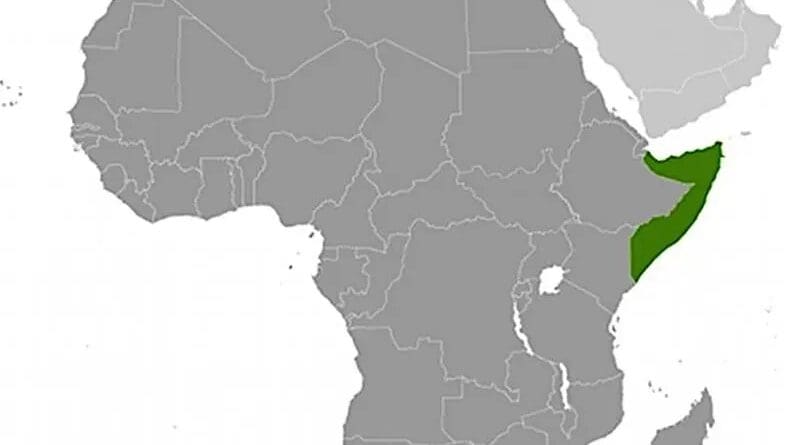Somalia: Al-Shabab Attacks US Outpost; One American Killed
By VOA
By Harun Maruf and Jeff Seldin
One U.S. special operations soldier was killed and four were wounded when al-Qaida-linked militants attacked an outpost still under construction Friday in southwestern Somalia.
The attack, about 50 kilometers north of the port city of Kismayo, came as U.S. forces were helping Somali and Kenyan troops construct the outpost, part of a multiday mission to help clear the area of militants with the al-Shabab terror group, according to U.S. military officials.
Witnesses said the attack took place near the town of Sanguni, where the U.S. and Somali troops were digging trenches and setting up other defenses.
They said the militants first set off a series of explosions before targeting the U.S. and Somali forces with heavy gunfire and mortar rounds.
A helicopter was brought in to evacuate the wounded.
The U.S. said a Somali soldier was among the wounded, though witnesses said two Somali soldiers were killed.
Al-Shabab quickly claimed responsibility for the attack on Telegram via its Shahada News Agency.
“Shabab al-Mujahedeen Movement fighters mounted a fierce attack in a military base of American and Somali forces,” the report said, according to a translation by the SITE Intelligence Group.
The death of the U.S. soldier in Somalia was the second in the last two years.
Last May, a U.S. Navy SEAL was killed near the village of Dar es Salam in Somalia’s Lower Shabelle region, the first U.S. casualty in the country since 1993’s Black Hawk Down incident.
Al-Shabab has increased the pace of its attacks in recent weeks, coinciding with start of the Muslim holy month of Ramadan, including two attacks, in Wajid and El-Wak, on Thursday.
In El-Wak, near the border with Kenya, the militants raided a local health center for medicine and other supplies.
Earlier this month, al-Shabab claimed it blew up a U.S. military vehicle and also downed a U.S. surveillance drone near Bosaso in the country’s northeast.
Friday’s attack on the U.S.-Somali force north of Kismayo came as U.S. military officials have been considering plans to cut the number of U.S. special operations forces deployed to Africa.
The plan, first reported by The New York Times, would reduce the number of special operations forces from 1,200 to 700 over the next three years.
But U.S. military officials said this week that no decision had been made.
“There has been no direction at this time to adjust force size in AFRICOM [U.S. Africa Command],” said Pentagon spokeswoman Major Sheryll Klinkel.
Still, the U.S. has made several changes in the way its forces have been operating in Africa, the result of an investigation into an October 2017 ambush of U.S. special operations forces in Niger that left four Americans and four Nigeriens dead.
The report found that not only was the Niger mission plagued by problems up and down the chain of command but that the U.S. and Nigerien forces were also done in by an unexpected and unprecedented show of force by militants aligned with the Islamic State terror group.
Military officials said that as a result, they ordered U.S. forces in Africa to try to avoid any missions likely to involve direct combat.
And at least in Niger, U.S. Africa Command’s General Thomas Waldhauser said commanders had been ordered to be “far more prudent” about the missions that were approved.
That prudence included steps to make sure that U.S. forces in Niger had access to more armored vehicles, additional firepower, and more drones for surveillance and reconnaissance.
Whether U.S. forces in other parts of Africa have been asked to take similar precautions is not clear.
A statement from U.S. Africa Command indicated the U.S., Kenyan and Somali forces attacked Friday had planned for the mission carefully.
“The population in the region had historically supported the government, and other Somali forces had prepared for this mission by coordinating heavily with and securing the support of local authorities ahead of time,” the statement said.

